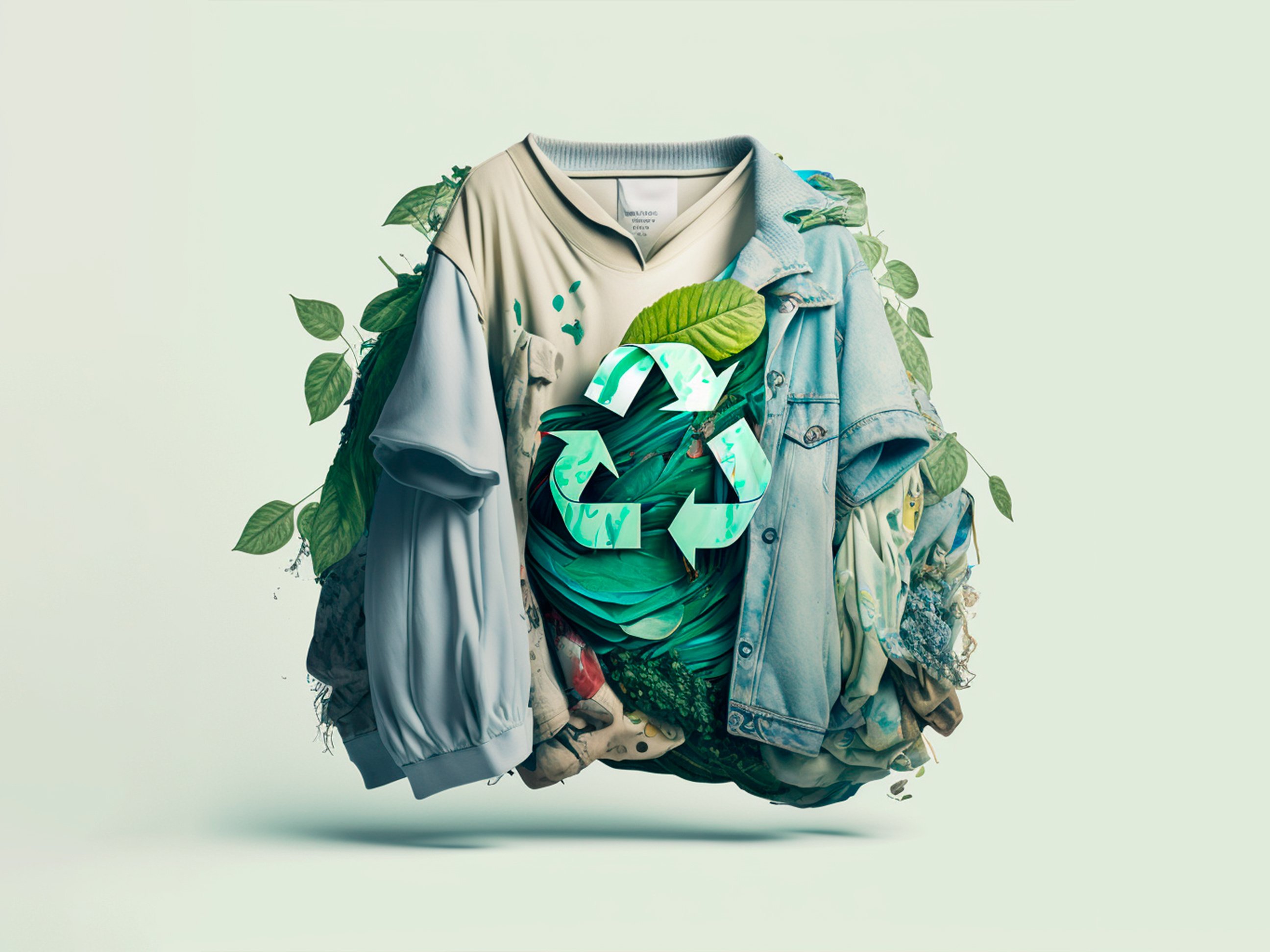Sustaining Neighborhood Cape Town Sustainable Fashion for a Greener Future
Sustaining Neighborhood Cape Town Sustainable Fashion for a Greener Future
Blog Article
Keep Ahead of the Contour by Discovering Cutting-edge Style Fads
In a sector as vibrant as style, staying in advance includes greater than simply adhering to present patterns-- it requires an expedition of technology. Smart fabrics, for example, are changing garments right into practical work of arts, while 3D printing is revolutionizing layout procedures with its adjustable, waste-reducing capacities. As sustainability ends up being a foundation, technologies like green products and round style techniques are reshaping ecological responsibility - Cape Town Sustainable Fashion. Furthermore, the merging of innovation and style declares a new age of customer engagement. Just how, then, can these emerging fads redefine the future of style, and what effects do they hold for brand names seeking to grow in this developing landscape?

Welcoming Smart Textiles
In the last few years, the fashion business has witnessed a transformative shift with the integration of wise textiles, a cutting-edge development that blends modern technology with material. This development stands for not just a combination of looks and capability yet additionally a considerable jump in the direction of sustainability and customization in vogue. Smart textiles, also referred to as e-textiles, embed sophisticated electronics such as sensors and conductive strings within the textile, allowing garments to engage with the setting or the user.
These fabrics are created to keep an eye on physiological specifications, such as heart rate or body temperature, providing real-time health and wellness analytics. Beyond health applications, smart textiles are likewise being used for adaptive clothing, which can alter color or pattern in feedback to ecological stimuli, hence using a dynamic fashion experience.
In addition, the advancement of energy-harvesting textiles that create power from activity or sunlight is leading the method for self-dependent wearable modern technology. This development is appealing to eco aware consumers and designers intending to decrease the eco-friendly footprint of style. As r & d in this field breakthrough, clever textiles are anticipated to become progressively widespread, reshaping the landscape of modern style with their multifunctional capacities.
The Increase of 3D Printing
Changing the production landscape, 3D printing has become a game-changer in the fashion business. This innovative innovation has actually enabled developers to push the borders of creative thinking, creating intricate and personalized garments that were formerly inconceivable. By leveraging electronic design and additive manufacturing, 3D printing helps with the production of complicated geometries and patterns, enabling designers to trying out new appearances and frameworks.
A noteworthy benefit of 3D printing in vogue is its capacity to produce on-demand, reducing waste and decreasing stock requirements. This efficiency not just optimizes production processes however additionally enables fast prototyping, allowing designers to bring their visions to life in a shorter duration. In addition, 3D printing supports personalization somewhat unequaled by conventional approaches, offering one-of-a-kind designs and tailored fits customized to specific customer choices.
The rise of 3D printing has also equalized fashion, making it easily accessible to emerging designers that can currently make premium pieces without significant monetary investment in standard production framework. As modern technology remains to development, the fashion industry is poised to harness the complete possibility of 3D printing, checking out new products and methods that will undoubtedly redefine just how fashion is developed and produced.
Sustainable Fashion Technologies
As the apparel industry comes to grips with the pressing need for ecological duty, sustainable fashion innovations have emerged at the leading edge of transformative change. The growing understanding of environmental impact has actually fueled a shift in the direction of my latest blog post more eco-conscious methods and products. Designers and brand names are now prioritizing sustainability, incorporating techniques that reduce waste and minimize carbon footprints.
One significant growth is the rise of circular fashion, which emphasizes recycling and upcycling to prolong the lifecycle of garments. This strategy not just decreases waste however also motivates customers to take you can try these out on a much more mindful strategy to clothing consumption. Additionally, the use of sustainable materials, such as organic cotton, hemp, and recycled polyester, has actually obtained grip. These products require less water and energy during manufacturing, considerably reducing environmental influence.
An additional advancement depends on the fostering of innovative dyeing strategies that use waterless procedures or natural dyes, thus minimizing the huge quantities of water and chemicals generally made use of in textile dyeing. Furthermore, improvements in biotechnology have brought about the development of lab-grown leather and fabrics, using cruelty-free and eco-friendly options to conventional products. With these pioneering efforts, the style sector is making significant strides in the direction of a more lasting future.

Tech-Integrated Clothing
Tech-integrated clothing represents a cutting-edge combination of fashion and innovation, improving how individuals interact with their clothing. This ingenious domain name is marked by the inclusion of wise fabrics and ingrained electronic elements, boosting both performance and aesthetic charm. From physical fitness trackers installed in sportswear to warmed jackets regulated using mobile phone apps, tech-integrated apparel provides customers unmatched ease and flexibility.
Introducing brand names are driving this pattern, concentrating on developing garments that reply to environmental stimulations or individual commands. As an example, some garments can change shade or pattern in action to temperature level changes, while others incorporate biometric sensing units to check wellness metrics like heart rate or stress and anxiety degrees. The seamless assimilation of modern technology into textiles also extends to environmental sustainability, with efforts to develop self-cleaning materials or garments that adjust to climate condition, therefore decreasing the demand for numerous layers.
Moreover, the arrival of wearable technology is not just limited to garments yet reaches accessories like watches and glasses, further broadening the range of tech-integrated fashion. As the industry proceeds to innovate, the capacity for customization and personalization in clothing grows, using consumers one-of-a-kind, tech-enhanced style experiences that deal with their individual needs and preferences.
Future of Virtual Style
In recent times, the future of virtual style has actually arised as a transformative force within the sector, leveraging advancements in digital technology to redefine how style is created, experienced, and consumed. By integrating enhanced click now reality (AR), virtual truth (VIRTUAL REALITY), and 3D design devices, designers can now craft interactive and immersive experiences that go beyond traditional style boundaries. Virtual style permits the creation of garments that exist exclusively in electronic environments, offering countless opportunities for innovation without the limitations of physical manufacturing.
This electronic shift not only offers possibilities for imaginative expression but additionally addresses sustainability issues integral in standard style practices. Cape Town Sustainable Fashion. By getting rid of the requirement for physical resources, online fashion decreases waste and reduces carbon impacts. Moreover, the rise of online style aligns with the raising customer demand for one-of-a-kind and tailored experiences, as online garments can be customized and tailored to private choices effortlessly

Verdict
The fashion business's future depend on the assimilation of sustainable methods and innovative technologies - Cape Town Sustainable Fashion. Smart fabrics and tech-integrated apparel are boosting functionality, while 3D printing uses chances for personalization and waste reduction. Sustainable fashion, via circular methods and eco-friendly materials, shows a commitment to ecological stewardship. Furthermore, online style is positioned to redefine customer interactions. Adjusting to these trends is vital for brand names seeking to stay appropriate and competitive in this quickly progressing landscape.
In recent years, the fashion sector has actually witnessed a transformative change with the assimilation of clever textiles, an advanced advancement that mixes modern technology with material.As the fashion market grapples with the pressing requirement for ecological duty, sustainable style innovations have actually arised at the leading edge of transformative change.In current years, the future of online fashion has actually arised as a transformative pressure within the industry, leveraging developments in electronic technology to redefine just how style is developed, experienced, and eaten. The increase of online style lines up with the increasing customer need for individualized and unique experiences, as online garments can be customized and tailored to specific preferences with ease.
The style industry's future lies in the assimilation of innovative innovations and sustainable techniques.
Report this page